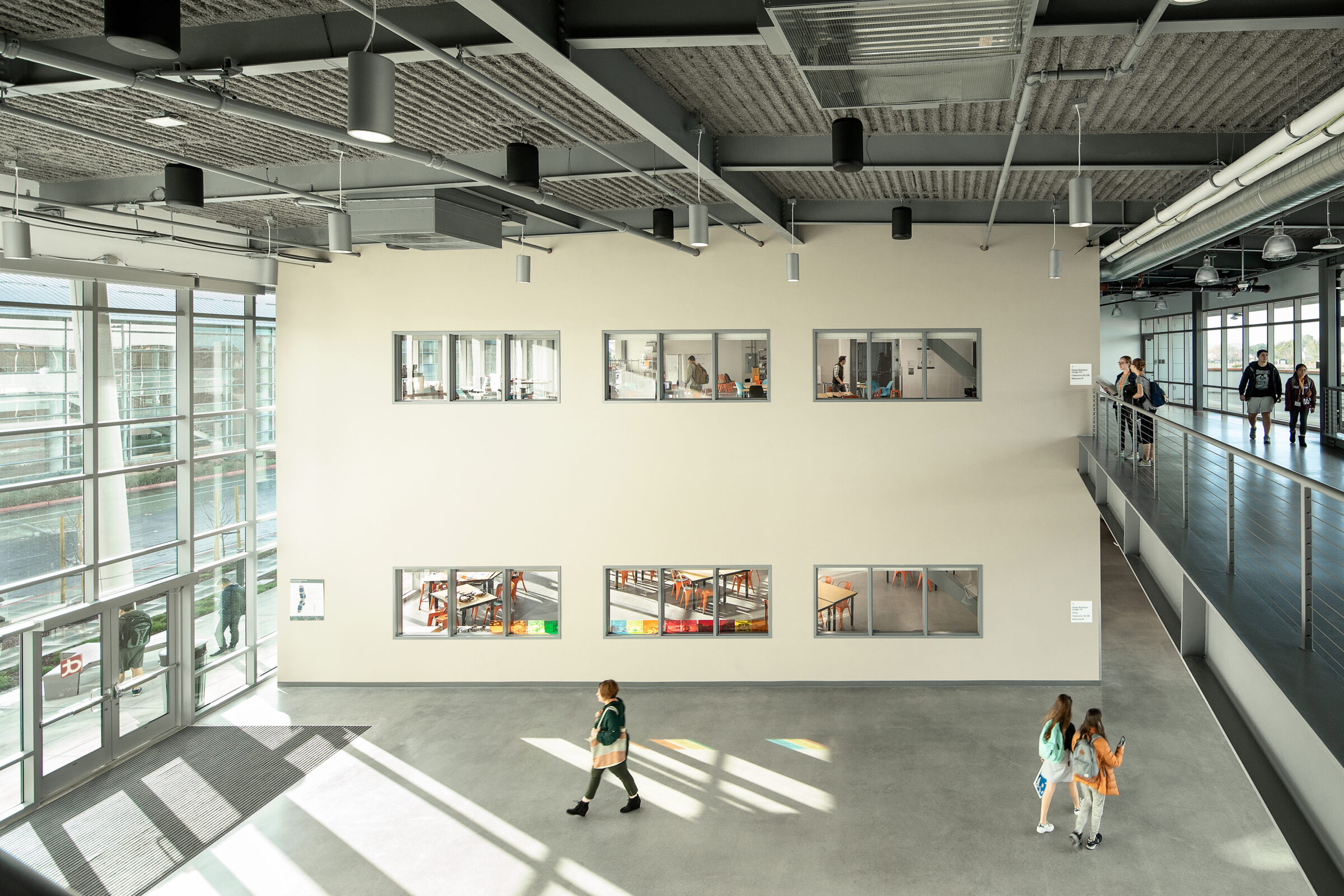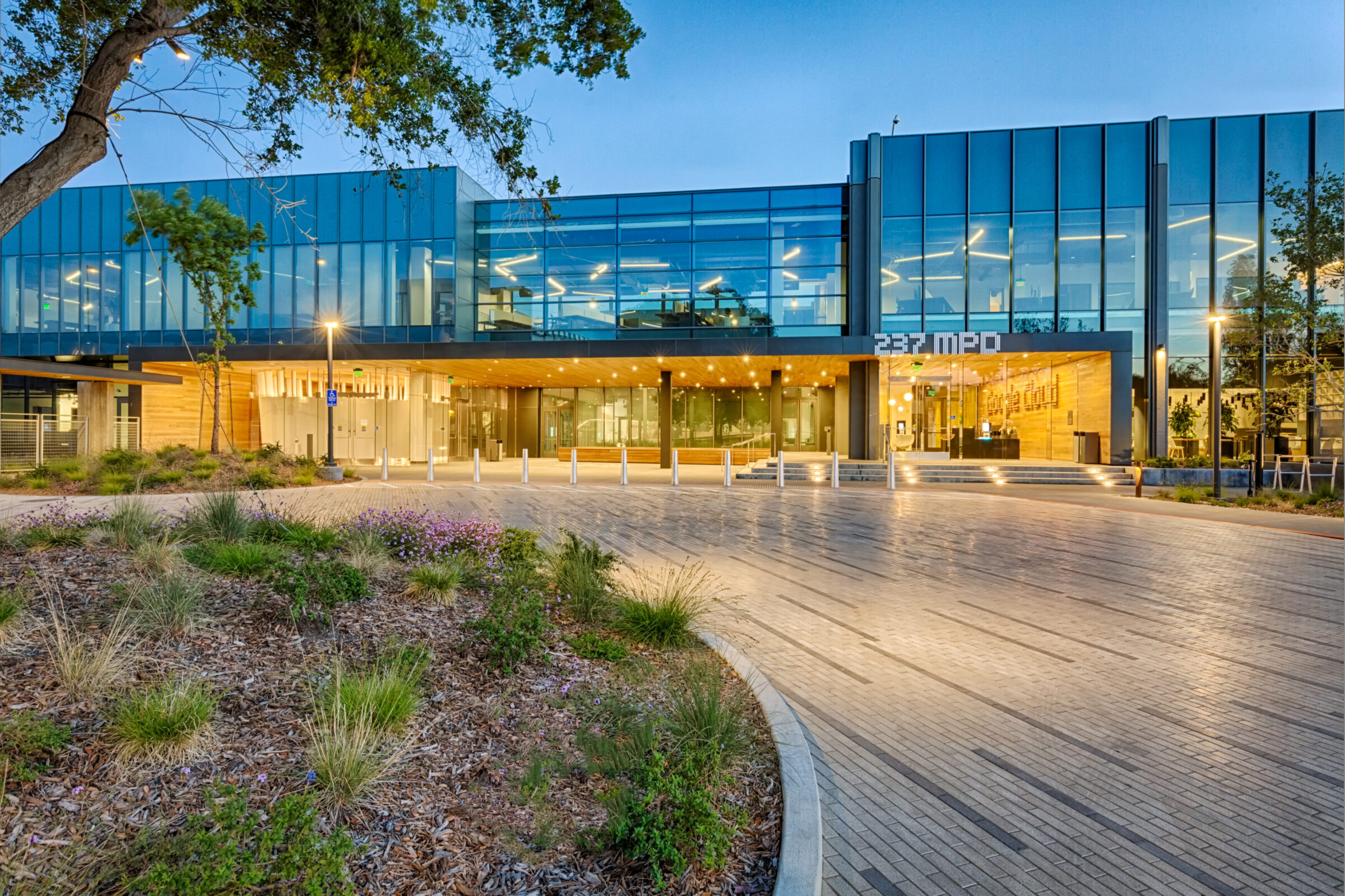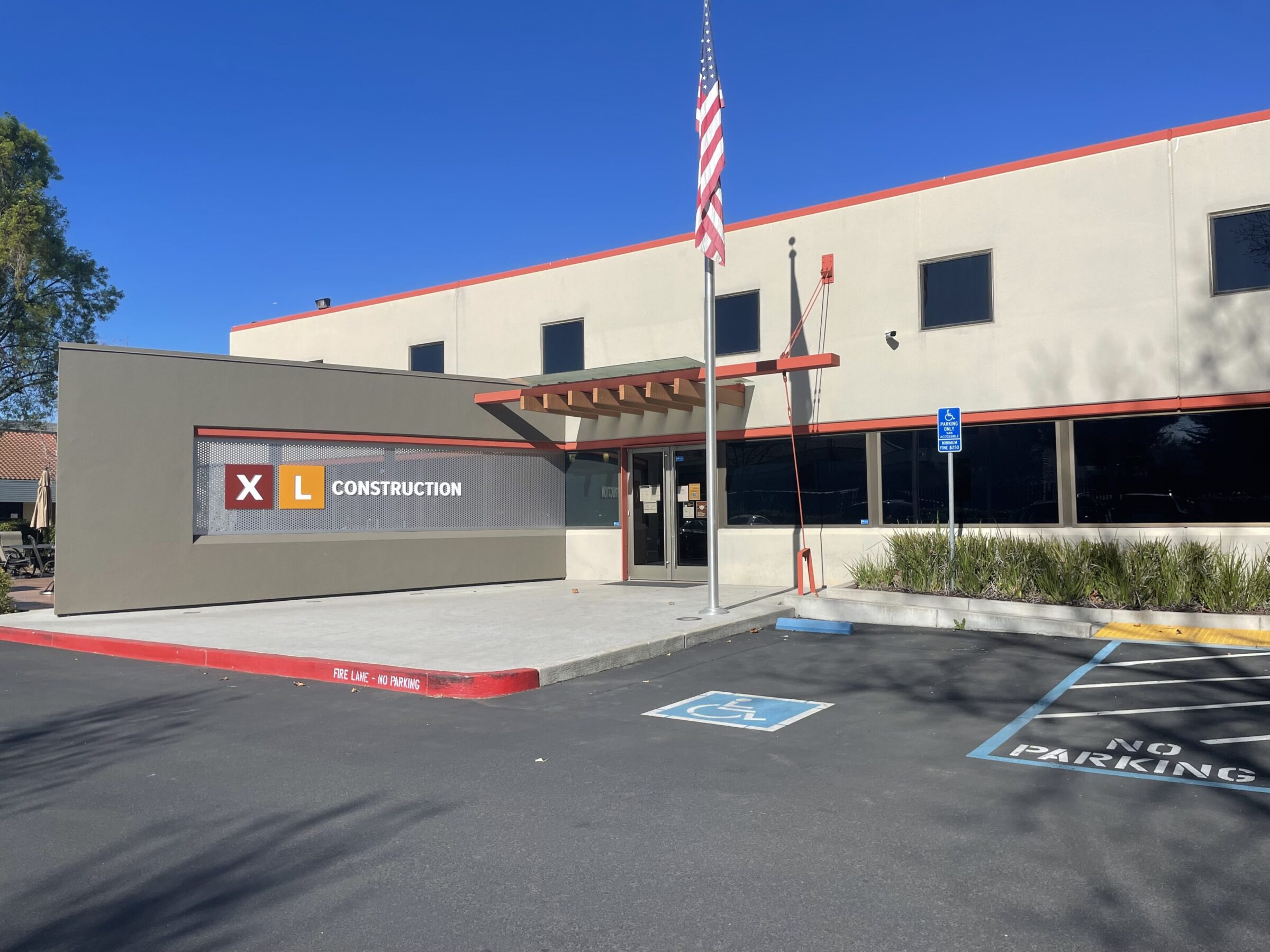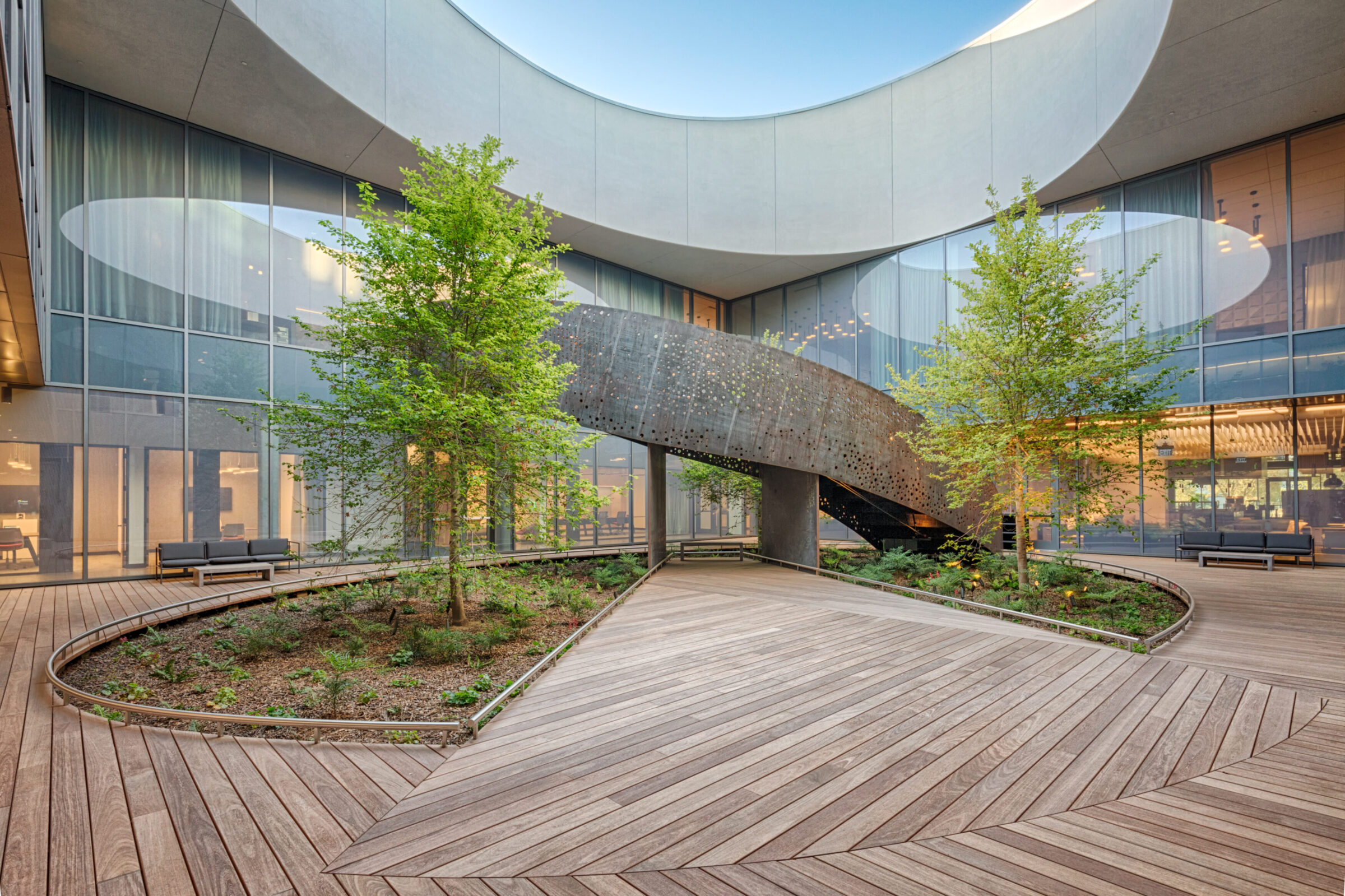One of Bay Area’s largest homeless shelters to launch in Redwood City
The opening is a key milestone in San Mateo County’s ambitious plan to move everybody living on its streets indoors
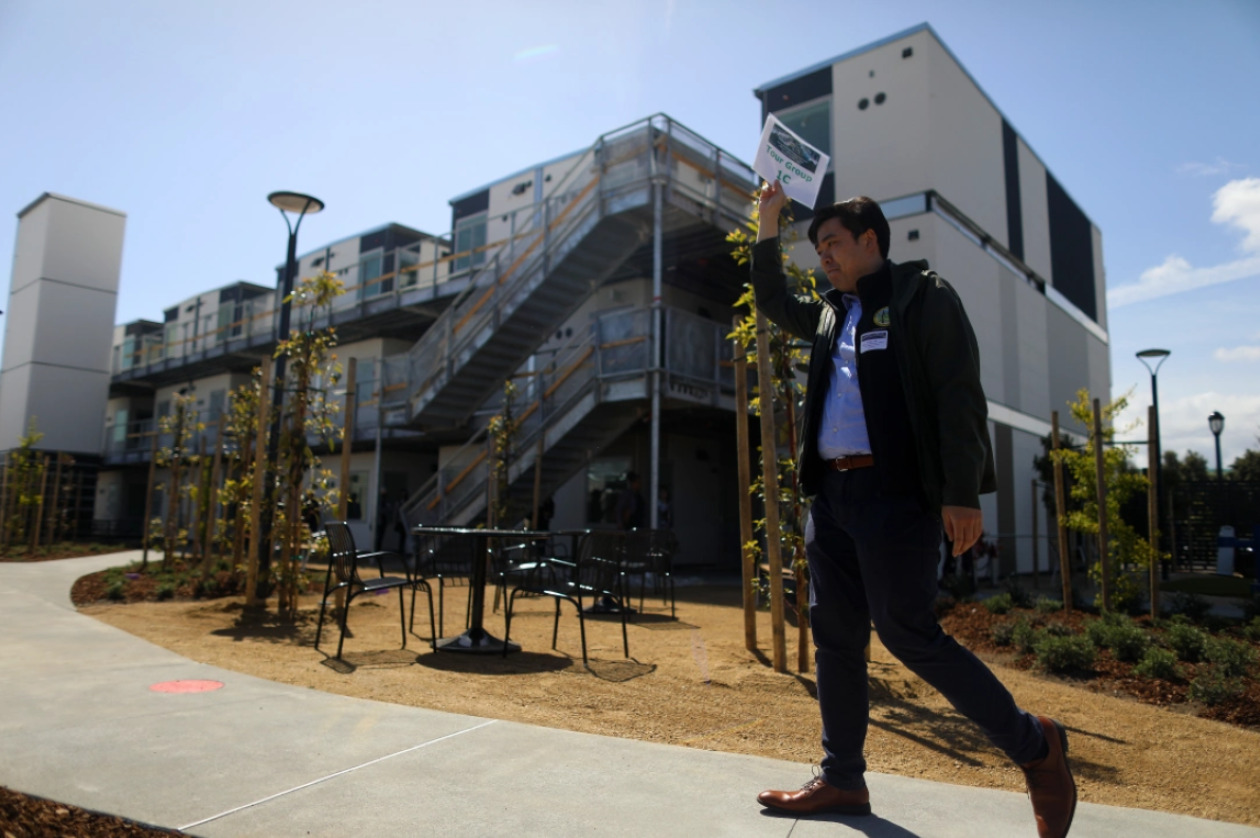
One of the Bay Area’s largest homeless shelters is set to open in Redwood City, a key milestone in San Mateo County’s ambitious plan to move everybody living on its streets indoors.
At a ribbon-cutting ceremony Tuesday, local officials and project backers touted the 240-unit “navigation center” east of Highway 101 as a cost-effective and “dignified” model for solving the Bay Area’s worsening homelessness crisis.
Let’s all celebrate today this opening, with the hope that other communities in the Bay Area will follow the lead of San Mateo County and the city of Redwood City to end homelessness throughout our region,
said billionaire Silicon Valley developer John Sobrato, who helped plan the project.
The center, at 275 Blomquist St. in a commercial and industrial area near Redwood Creek, will provide residents with private rooms and bathrooms, as well as onsite medical, mental health and addiction services. At the same time, caseworkers will help them find permanent housing. Residents are expected to move in within the next few weeks.
The facility, consisting of 200-square-foot prefabricated apartments resembling shipping containers stacked three stories high, cost about $57 million to build. That comes to around $240,000 per unit in a region where building affordable housing can cost more than three times that amount.
The bulk of the construction was paid for by California’s Project Homekey program, which launched during the pandemic to help local governments, tribes and nonprofits fund new homeless housing. Complete with a basketball court, dog run and garden area, the Redwood City project was finished in just under a year.
In addition to the relatively low cost and speedy construction, officials on Tuesday highlighted the facility’s individual rooms — where couples can stay together and residents can bring their pets — as more welcoming alternatives to dormitory-style emergency shelters with strict rules and little privacy.
“It’s always been such a challenge to recognize the difficulties in convincing people to accept housing,”
said County Board of Supervisors President Dave Pine.
“The barriers can be very overwhelming.”
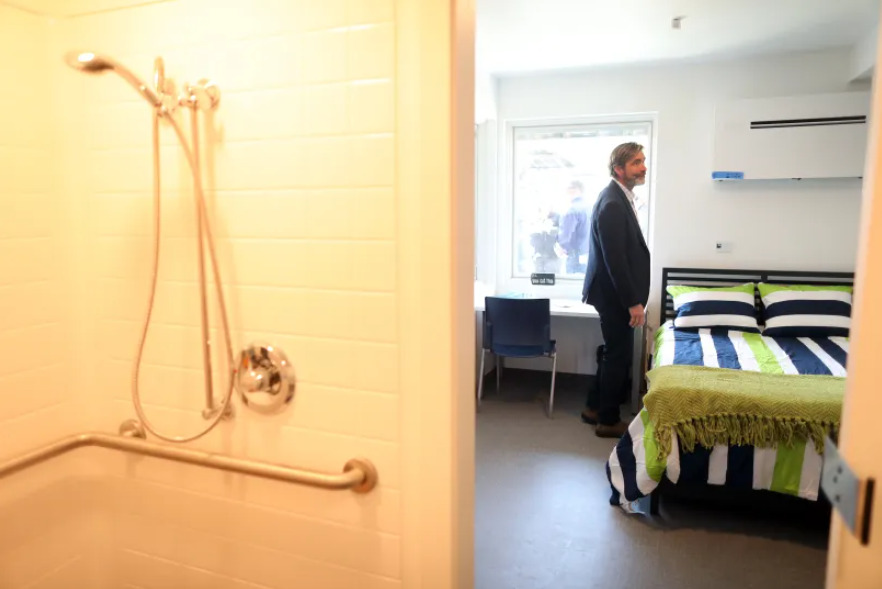
Joe Stockwell tours a housing unit at the San Mateo County Navigation Center on Tuesday, April 18, 2023, in Redwood City, Calif. The $57 million facility has 240 housing units, a dining area, meeting space, laundry, and a dog run. (Aric Crabb/Bay Area News Group)
Despite a flood of recent homelessness spending, San Mateo County didn’t come close to reaching its goal of achieving “functional zero” homelessness by the end of last year. That would have meant every unhoused person who wanted it had access to either a shelter bed, temporary housing or a permanent home.
The new navigation center should help by boosting the county’s shelter capacity to more than 780 units. But as of last year, there were roughly 1,100 homeless people living on the street and about 700 in shelters, according to the latest “point-in-time count.” That was a 20% increase in the county’s total homeless population from 2019.
Santa Clara County, meanwhile, counted more than 10,000 homeless residents last year, a 3% increase from 2019. Alameda County counted about 9,700 people, up 22%. Contra Costa County saw the biggest jump in the Bay Area, up 35% to nearly 3,100. All three counties also have a shortage of shelter beds.
With the navigation center now finished after months of construction delays, San Mateo County officials and shelter providers said they’re confident they can make significant progress toward moving everyone off the street.
“We’re opening doors to realizing that where there is a will, and believe me, it takes a lot of will, there is a way to achieve functional zero homelessness,” said Aubrey Merriman, chief executive of Menlo Park-based LifeMoves, which developed and will operate the shelter.
Still, officials and experts have acknowledged ending street homelessness within the next few years is an “aspirational” goal, conceding that more affordable housing, shelter beds and other resources are necessary. But several factors are working in San Mateo County’s favor. It has a smaller homeless population than other Bay Area counties, and it’s won outsized state homeless housing grants.
So far, San Mateo County has received over $100 million from the $3.75 billion Project Homekey program, one of the larger amounts in the Bay Area. With that money, the county has purchased four hotels that it converted to homeless housing. Along with the new Redwood City facility, the county’s shelter capacity is set to double compared to before the pandemic.
While experts agree that such interim housing sites are needed to alleviate homelessness, the shelters can only be so effective when there’s a severe shortage of affordable housing in the Bay Area. Residents are often allowed to stay just three to six months, and less than half typically find permanent homes, according to regional data.
Also this week, U.S. Representatives Zoe Lofgren, Anna Eshoo, Ro Khanna, and Jimmy Panetta — Democrats who represent Silicon Valley — announced Santa Clara County had won more than $11 million in federal housing grants to support various homelessness efforts. The money will go toward street outreach, rental assistance, housing placements and a working farm and affordable housing project in Santa Clara.
“Homelessness in Santa Clara County is a serious problem, caused and/or exacerbated by the astronomical home prices in the area and the COVID-19 pandemic,”
the representatives said in a statement.
“Addressing homelessness requires action from all levels of government.”
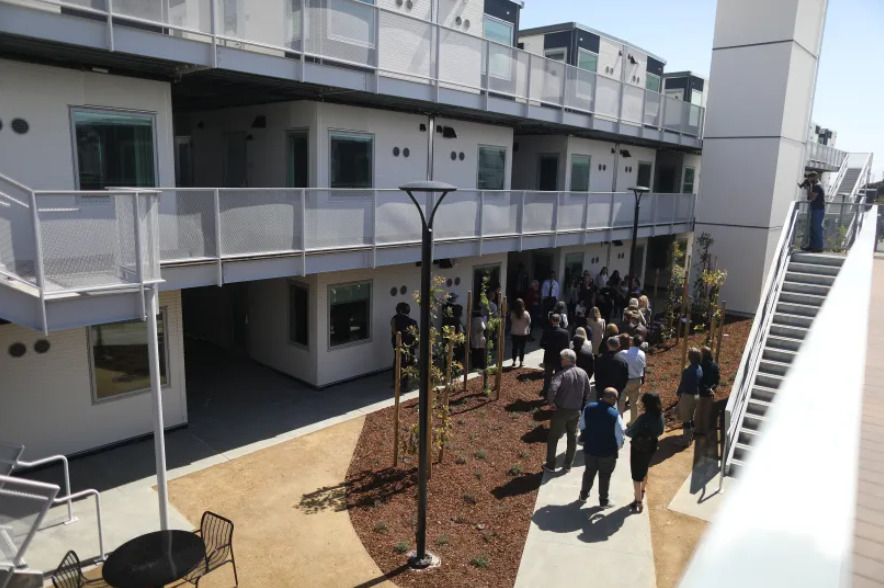
Visitors tour the San Mateo County Navigation Center on Tuesday, April 18, 2023, in Redwood City, Calif. The $57 million facility has 240 housing units, a dinning area, meeting space, laundry, and a dog run. (Aric Crabb/Bay Area News Group)
Source: Mercury News
Keep up to date with our latest news and industry insights.
